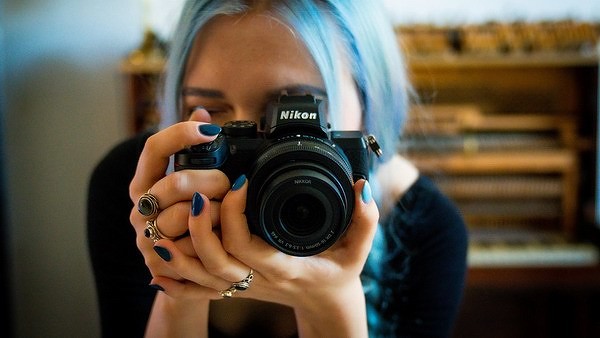news" />
11/23/2020, Mon, 09:59, Moscow time
, Text: Elyas Kasmi
Nikon produces, in addition to cameras, also lithography equipment for the production of semiconductor products. She supplied most of it for years to Intel, but Intel decided to partially switch to outsourcing and cut equipment purchases, which sharply hit Nikon’s financial stability and led to a global layoff of its staff.
What is Intel’s fault
Nikon, one of the world’s top three digital camera manufacturers, is struggling financially and preparing for a massive layoff. Some of the blame for what is happening in the company lies with the American Intel, a longtime partner of Nikon.
According to Nikkei Asian Review, Intel is ordering equipment from Nikon for the production of processors – the company, unlike AMD, has a number of its own factories. However, it has already announced plans to connect third-party chips to the production of its chips, as many companies from this area do that do not have their own factories. In the foreseeable future, it intends to significantly increase the share of its products manufactured at the facilities of its partners, and it will no longer need its own lithographic equipment in the same quantities, which will affect Nikon’s finances – the company received up to 70-80% of revenue in the segment of lithography equipment from Intel, while the division itself for the production of such “hardware” brings the company up to 40% of total revenue.
Why does Intel need all this
Intel will ramp up production in third-party factories to keep up with competitors – AMD, for example, is releasing 7nm processors in Taiwanese TSMC factories, while Intel is barely won 10 nm and stranglehold keeps for outdated 14 nm. AMD is going to switch to 5 nm in the coming years, which Intel, using its own capacities, cannot yet afford.
Intel destroys Nikon’s business to stay afloat under pressure from competitors
–
One of the contract manufacturers of Intel chips may be the Korean company Samsung, which, along with TSMC, has already mastered 5-nanometer standards. For the first time this became known back in November 2019, but then Intel was quick to refute this information. In June 2020, Reuters published new confirmations of possible cooperation between Intel and Samsung.
Nikon’s financial difficulties
According to statistics from Statista.com, as of September 2020, Nikon was ranked third in the global ranking of digital camera manufacturers. It held an 18.6% share, beating Fujifilm and Panasonic (both 4.7%). Nikon was ahead of Sony (20.2%) and Canon with a 45.4% share.
But even being in the top three does not mean that Nikon is in complete order with finances. In fact, for the second quarter of fiscal 2021 (the company ends on March 31, 2021) Nikon received revenue of 110.9 billion yen ($ 1.067 billion at the exchange rate as of November 23, 2020), which is 25% less than in the same period the previous fiscal year.
Nikon’s market share after all the changes may decline
–
Almost all divisions of the company showed negative results, not counting only Healthcare Business (production of medical equipment) – it received 0.1 billion yen ($ 963 thousand) in operating profit, and its revenue reached 15.4 billion yen ($ 148.3 million).
The Imaging Products Business, which deals specifically with the production of photographic equipment, showed a drop in revenue from 51.7 billion yen ($ 497.9 million) a year ago to 39.3 billion yen ($ 378.5 million) at the end of the reporting period. Operating loss for the second quarter of fiscal 2021 was 19.3 billion yen ($ 185.8 million).
The division of Precision Equipment Business, which produces, among other things, lithographic equipment, at the end of the reporting period received revenue of 44.2 billion yen ($ 425.6 million) and an operating loss of 0.9 billion yen ($ 8.6 million). Industrial Metrology and Others Division – Revenue of 12.2 billion yen ($ 117.5 million) on an operating loss of 2.5 billion yen ($ 24 million).
During this period, Nikon sold 240 thousand cameras with interchangeable lenses (350 thousand a year earlier), 390 thousand lenses (there were 570 thousand) and 70 thousand compact cameras without interchangeable lenses (230 thousand a year earlier).
Consequences for Nikon
Due to financial turmoil and difficulties in partnering with Intel, Nikon is going to lay off about 2,000 people, which is 10% of its entire staff as of Q3 2020. Among them will be camera sales specialists, since the demand for them fell sharply due to the popularity of smartphones. The coronavirus pandemic has also had a negative impact on this area – the closure of borders around the world has reduced the number of tourists who no longer need cameras to photograph the sights of other countries, since they can no longer get into them.
Nikon also intends to move production outside of Japan to cut costs. The assembly of its cameras in the foreseeable future will be fully implemented in Thailand – according to preliminary estimates, this step, coupled with the reduction of staff, will allow her to reduce operating costs by 63 billion yen.
Possible solutions
One of the options for solving financial problems, writes the Nikkei Asian Review, may be to strengthen partnerships with China. China is currently actively developing semiconductor manufacturing, but at the same time strives to minimize the use of American equipment and technologies.
In this regard, Chinese companies may be interested in Nikon lithographic equipment, which Intel no longer requires. However, Nikon has not announced any new deals with China so far, although sales of its lithography equipment have dropped significantly. For example, between April and September 2020, it shipped only nine units, although during the same period in 2019 it delivered 18 units.
Nobody needs cameras
The digital camera market is indeed shrinking at a record pace. According to the Japan Camera & Imaging Products Association (CIPA), 1.562 million SLR cameras were sold between January and September 2020, down 54% from a year earlier. Mirrorless camera sales fell 34% to 1.807 million globally.
Against this background, Olympus, once one of the most popular vendors of photographic equipment, decided to finally leave the camera market, where it had been present since 1934. reported CNews, she will sell her business to the Japanese investment fund JIP, which in 2014 bought the VAIO brand and the production of laptops from Sony.
The company itself explains its withdrawal from the market by the impossibility of competing with smartphones, since more and more people prefer to take pictures on them.
<!–


